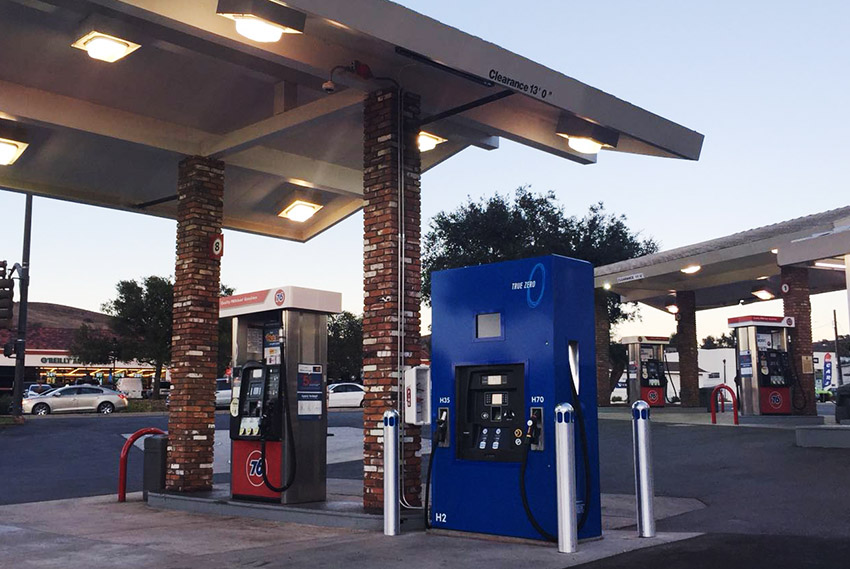Toyota North America confirmed Thursday that the second-generation version of its Mirai hydrogen fuel-cell car is arriving at some California dealers later this year. To help support the model, which will be made in much higher numbers than its predecessor, Toyota announced a partnership with Iwatani Corporation that will boost the number of retail, publicly available hydrogen fueling stations by nearly 25 percent in Southern California.
That boost may sound like a huge commitment as a percentage, but on the ground it amounts to just seven stations. Each of them will have two dispensers and be capable of dispensing a total of up to 900 kilograms of hydrogen per day. That will boost the hydrogen dispensing capacity of the Southern California region by 6,300 kilograms per day.

BMW 5-Series Gran Turismo hydrogen fuel cell concept
To help put that into context, it takes more than 5 kilograms to fill the current version of the Mirai. That’s more than 1,200 vehicle fills per day or up to 8,400 fills per week—or enough to make room for thousands more fuel-cell vehicles in that regional ecosystem.
Those are potential numbers if everything goes perfectly. Last year an explosion at a San Francisco Bay Area production facility resulted in a hydrogen supply shortage for the region that lasted months. Regionally, there simply wasn’t enough to go around, forcing drivers of some fuel-cell models to park their cars and drive rentals until the fuel supply reliably returned.

2021 Toyota Mirai concept
The 2021 Toyota Mirai is a completely different kind of car than its predecessor, which fit together with the current Prius family from a design standpoint. The new version is much longer and is built on a rear-wheel-drive platform that gives it proportions much closer to those of a sport sedan.
The range of the upcoming Mirai is anticipated to pass 400 miles, whereas the current model has an EPA rating of 312 miles.

BMW i Hydrogen Next concept
Toyota's next-generation fuel-cell stack is due to be shared with BMW for its i Hydrogen Next fuel-cell vehicle due in 2022; with much higher volume planned for the fuel cell and vehicle.
In California, the number of stations may again be the limiting factor. According to the U.S. Alternative Fuels Data Center, there are 43 available, publicly accessible hydrogen stations in California. Repeatedly, over a span of a couple of decades, targets for expanding the infrastructure have been shown to be overly optimistic and seemingly unachievable. Meanwhile, DC fast-charging infrastructure for road-trip-compatible EVs has expanded at a rapid pace.

True Zero hydrogen fueling pump, run by First Element Fuels, opened in Thousand Oaks, CA, Mar 2018
Construction of the first hydrogen stations, in cooperation with Nel Hydrogen, will start in early 2021, with the first becoming available by mid-year.
Iwatani claims to be “Japan’s only fully integrated supplier of hydrogen,” and the addition will bring its total number of global hydrogen fueling stations to 64.
